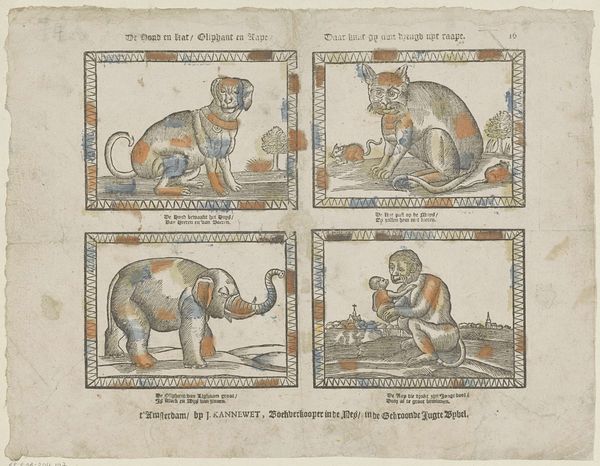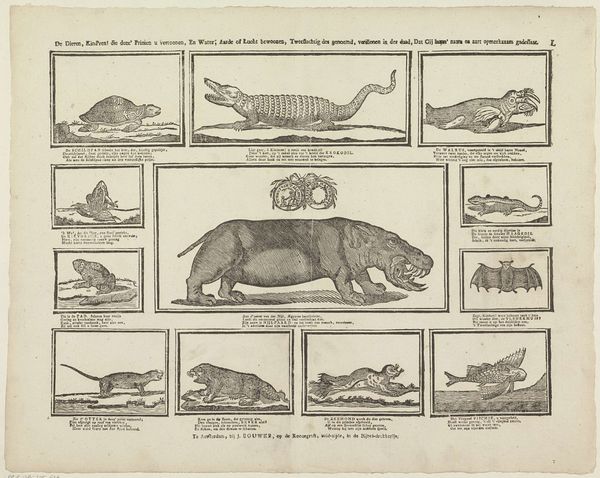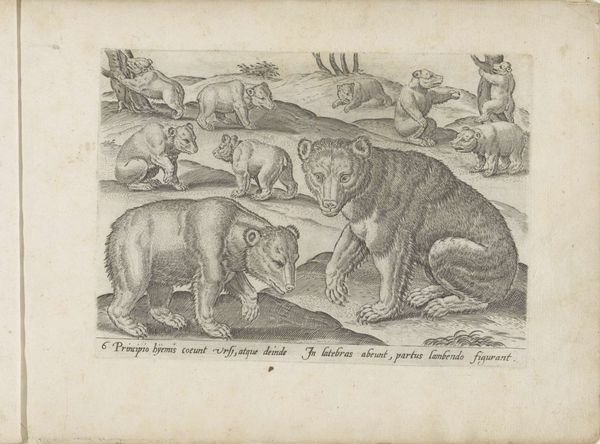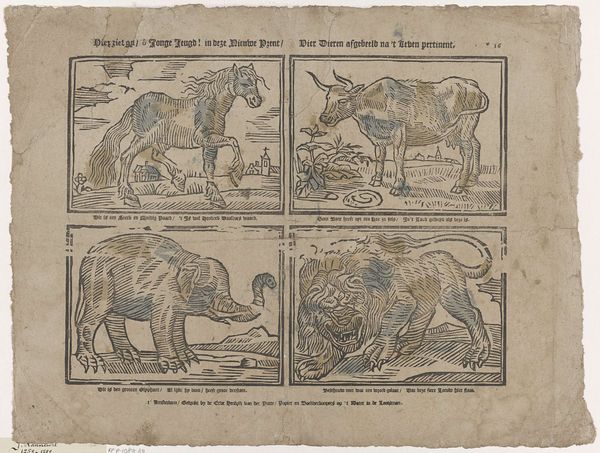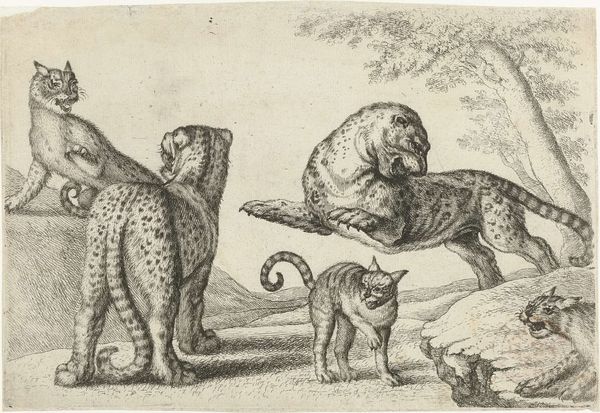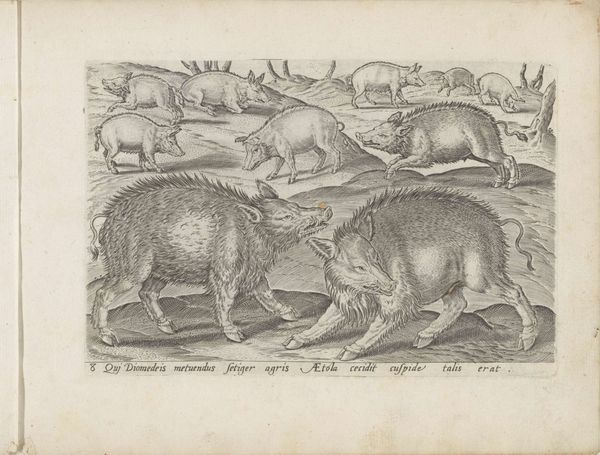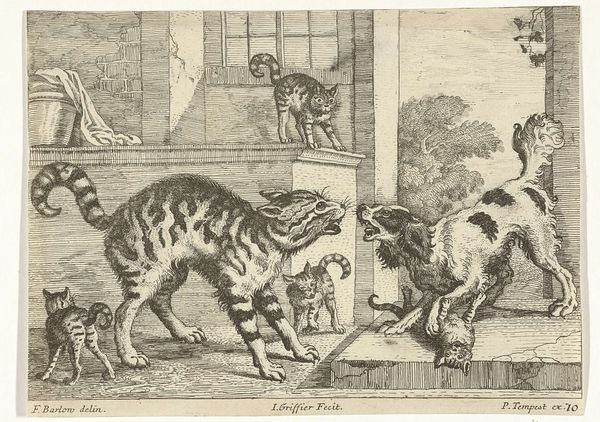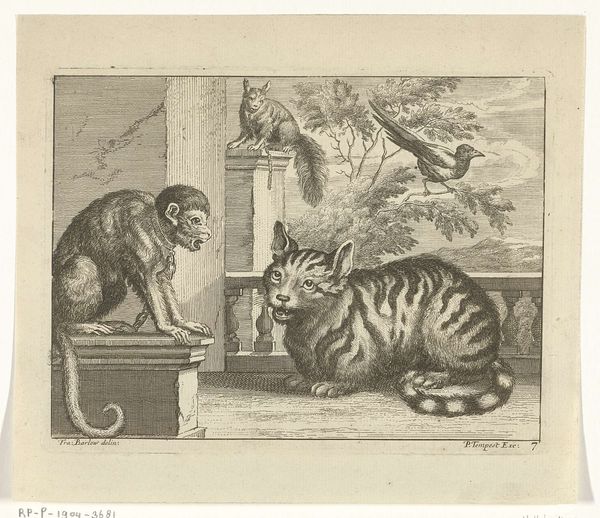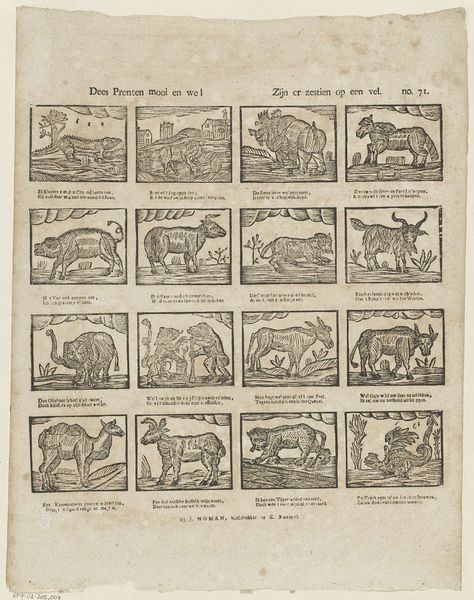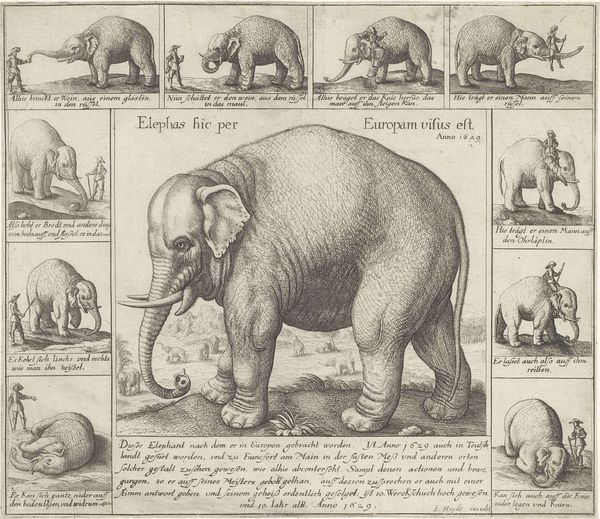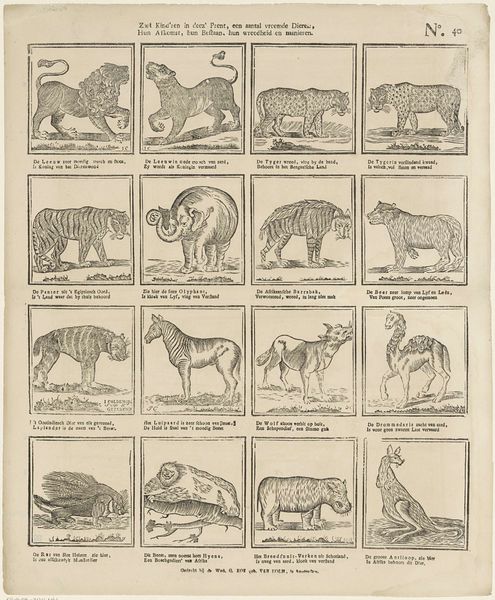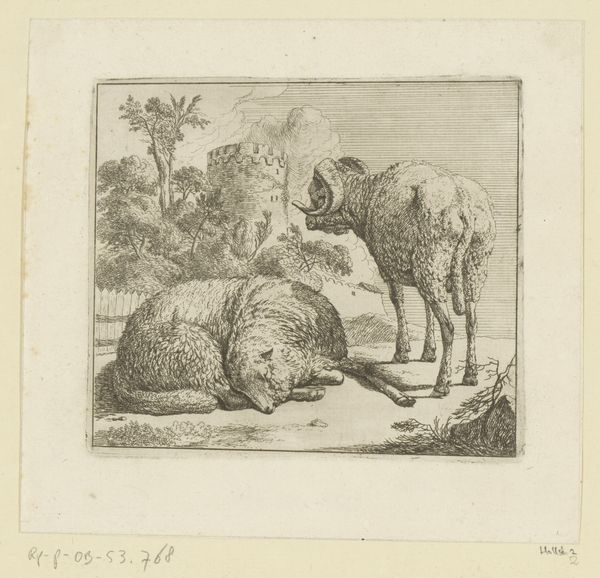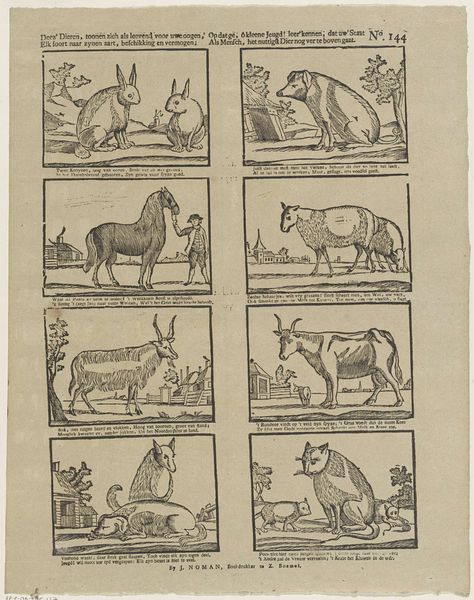
Wilt myn' oliphant niet schromen, kuscht hem vry hy doet geen leed: / Biedt het aapje iets van uw lekkers, 'k wed dat hy er niets van eet 1806 - 1830
0:00
0:00
schalekampvandegrampel
Rijksmuseum
print, engraving
#
dutch-golden-age
# print
#
caricature
#
figuration
#
genre-painting
#
engraving
Dimensions: height 333 mm, width 405 mm
Copyright: Rijks Museum: Open Domain
Curator: Here we have a print titled "Wilt myn' oliphant niet schromen, kuscht hem vry hy doet geen leed: / Biedt het aapje iets van uw lekkers, 'k wed dat hy er niets van eet," created sometime between 1806 and 1830 by Schalekamp & Van de Grampel. It's currently part of the Rijksmuseum's collection. The composition strikes me as very playful and somewhat quaint. What are your first thoughts? Editor: Well, my eye is immediately drawn to the lines. The engraving technique provides a crisp, clear image despite what seems like cheap paper. The animal depictions, though, come off as incredibly stylized; the execution clearly leans more towards function than detailed realism. Curator: Absolutely. These animal allegories offer insight into social dynamics. For instance, the elephant is encouraged to be embraced, with the implication that no harm will come of it. The text accompanying the monkey cautions about offerings of treats. What socio-political comment do you suspect this is making? Is it maybe commenting on colonization and our relationship with exotic animals or peoples from faraway lands? Editor: A keen point, and I see it. Focusing on the materiality of printmaking, the act of reproducing images made such social messaging accessible to the public, but at a considerable cost for independent tradespeople; paper was extremely expensive, and engravers like these partnered to pool financial capital and broaden circulation of work like this. The commercial implications are unavoidable. Curator: I think that’s fair. When examining these animal depictions, one must consider the embedded cultural biases. Who is "safe" and who requires a guarded distance? Whose generosity do we value, and whom do we view with suspicion? These images serve as sites where these ideological battles occur. It is this dialogue that continues to impact representations of marginalized identities even in modern society. Editor: This collaborative effort resulted in something both aesthetically considered and, by implication given printing costs, relatively politically engaged. These materials were intended to provoke discussion; perhaps in contemporary society it's essential we don't simply "look," but question. Curator: I agree. By analyzing this print, we have come to appreciate the ways art can act as both a mirror reflecting societal values, and also a lens for reassessing how we look at animals and each other. Thank you for your unique perspective on this. Editor: My pleasure, our reflection reveals new ideas for engagement in process, consumption, and creation.
Comments
No comments
Be the first to comment and join the conversation on the ultimate creative platform.
